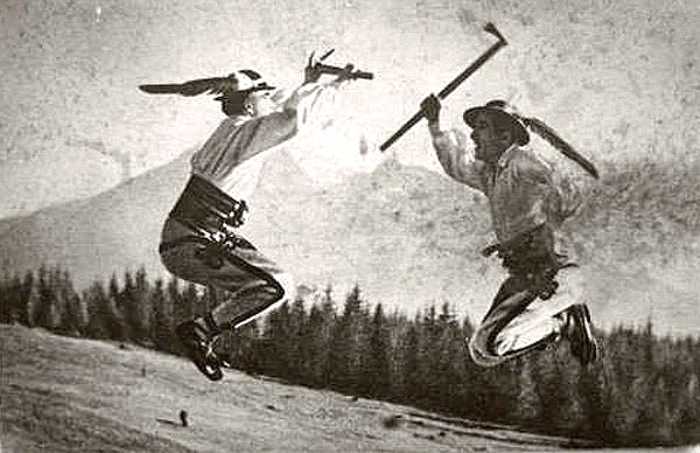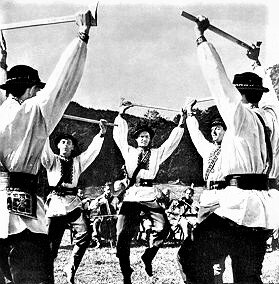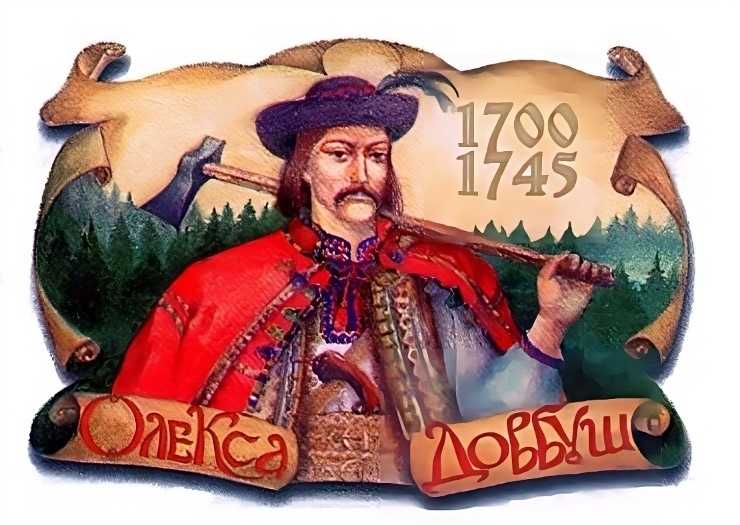The Shepherd’s Axe at a Glance
What is a shepherd’s axe?
A shepherd’s axe is a distinctive axe with a sharp, narrow blade and a small blunt hammer at the back. It has a long handle and is commonly used in the Carpathian Mountains by various communities such as Ukrainians, Gorals, and Romanians. The length of the shepherd’s axe ranged from 15 to 60 inches (35 to 150 cm), depending on its intended use.
What are the origins of the shepherd’s axe?
Shepherds and nomads first used the shepherd’s axe centuries ago in the Carpathian Mountains. It evolved from the specific needs of mountainous living and combined the functionality of a cane, an axe, and a hammer. The weapon’s origins influenced the development of certain types of hand weapons and resulted from the practical requirements of mountain dwellers.
What were the use cases for the shepherd’s axe?
The shepherd’s axe had various uses, including cutting off summer trees for winter feed, marking maples for border delineation, serving as a personal and hunting throwing weapon, acting as a travel stick or walking aid, being employed in sheep slaughter, enhancing cultural dance performances, forming part of men’s festive costumes, and being used as an attribute of bachelors during wedding celebrations.
How did the shepherd’s axe evolve over time?
Originally a versatile weapon, the shepherd’s axe underwent an evolution and transformed into an elegant, stylized axe-cane. Its usage as a weapon diminished, and it became a cherished talisman, an ornate decoration, and a sacred artifact used in rituals and dances.
The shepherd’s axe is a distinctive axe with a sharp, narrow blade and a small, blunt hammer at the back, featuring a long handle. This cold weapon is still commonly used among inhabitants of the Carpathian Mountains, including Ukrainians (Hutsuls, Boykos, and Lemkos), Gorals (Polish Highlanders), and Romanians. The length of the shepherd’s axe ranges from 15 to 60 inches (35 to 150 cm), depending on its intended use. The shepherd’s axe was first mentioned in writing during the reign of Emperor Qin Shi Huang (259–210 BC).
| Shepherd’s Axe | |
|---|---|
| Type: | Melee weapon |
| Origin: | The Carpathian Highlanders |
| Utilization | Mostly civilian, seldom military |
| Length: | 15 to 60 inches (35 to 150 cm) |
| Weight: | 1 to 3 lb (0.45 to 1.36 kg). |
The Shepherd’s Axe’s Origin

The shepherd’s axe, from the wide plains of Eurasia, stands out as a remarkable relic in the history of weapons. Shepherds and nomads used it for the first time centuries ago in what are now Slovakia, the Czech Republic, Poland, Ukraine, Romania, and Hungary, including in the breathtaking Carpathian Mountains. The Bulgars, Alans, and Slavs all used this weapon.
The weapon combined the usefulness of a tool with the convenience of a walking staff, giving its user the benefit of both an everyday implement and a low-profile weapon. Northern Hungarian shepherds utilized them for more than just sheep herding. Its iron blade measured 2.4–3.2 inches (6–8 cm) wide and 3.9–4.7 inches (10–12 cm) in length.

The shepherd’s axe emerged simultaneously with the settlement of the Carpathian slopes, evolving from the specific needs of mountainous living.
This edged weapon combined the functionality of a cane (like an obuch), an axe, and a hammer. Its origins not only influenced the development of certain types of hand weapons but also resulted from the practical requirements of mountain dwellers.
- First, a stick or cane was necessary for traversing mountain slopes.
- Secondly, a small axe or hatchet was needed for tasks in the mountain forest and for protection against predators and potential outlaws.
This led to the invention of a tool that integrated the functions of a cane, a hammer, and an axe.
Use Cases

The shepherd’s axe was used for various purposes, including:
- Cutting off summer trees: It was employed to prune the branches of deciduous trees, providing essential winter feed for cattle.
- Blazing: The weapon served as a tool for marking maples with distinctive cuts, specifically for border delineation.
- Personal and hunting throwing weapon: It was wielded for both personal defense and as a means of hunting, specifically for throwing at targets.
- Travel stick: The shepherd’s axe served as a practical walking stick during journeys or expeditions.
- Slaughter of sheep: It was employed in slaughtering sheep for food or materials.
- An attribute of cultural dance: It played a role in folklore dances, often accompanied by sheets, rattling rings, or chains, enhancing the visual spectacle.
- Part of a men’s festive costume: The weapon formed an integral part of the attire worn during men’s festive occasions.
- An attribute of bachelors: Bachelors would use this weapon as officiants inviting others to participate in wedding celebrations.

Throughout history, the use of bladed weapons was crucial for survival in the forest, particularly among the Celts. The axe served as a versatile war hammer, featuring a blunt hammerhead on one side and a sharp, elongated blade on the other.
Additionally, among the Celts, the axe had ritual significance; it was employed during ceremonies, sacred initiations, and dedications. This may explain the transformation of the cane and axe functions into the long-handled shepherd’s axe, which encompassed all the roles of the horseman’s pick, including ceremonial usage.

The “bartkas,” or shepherd’s axe, that the East Slavic Hutsuls first used, most likely descended from lightweight battle axes like the horseman’s picks. The steel varieties of this weapon with a blunt hammerhead and a sharp, elongated blade were locally called kelep, czekan, or klevets.
The Etymology of the Weapon
While the origin of the term “shepherd’s axe” is self-explanatory, the weapon was originally known by many different names in European regions. Hungarian warriors during Rákóczi’s War of Independence in the 18th century used this weapon against Austrian forces.
For instance, the term “bartka” (a Slavic name for the weapon) originates from Eastern Romance or Hungarian languages, such as Romanian “bárdă” and Hungarian “bard,” which also gave rise to “barda” (a type of carpenter’s axe among the Hutsuls), “berdinka” (axe), “bardash” (big axe), and “berdish” or “barta.”

These words likely entered Romanian and Hungarian from Germanic languages, while the Old Norse term “barta” may be linked to the Old German “bart,” meaning “beard,” drawing a comparison between the axe blade and a beard. The word “halberd” shares a similar etymology.
However, these names may also have originated from the Turkic term “balta,” which simply means “axe,” and this points to the nomadic origin of the weapon: Scythian artifacts show similar-looking weapons, and the nomads in Eurasia were the first people to employ the shepherd’s axe. A large number of them came from the burial sites of the Avars, a Turkic-speaking Eurasian khaganate.
The Shepherd’s Axe’s History


The shepherd’s axe was first mentioned in writing during the reign of Emperor Qin Shi Huang (3rd century BC).
Some scholars propose that the use of battle axes by the Celts influenced the naming of Gallic tribes.
According to this hypothesis, after the migration of the Celts from the Carpathians, their axes not only persisted among the indigenous population but also underwent further development among the Hutsuls, resulting in the shepherd’s axe.
This versatile weapon served as a cold weapon for self-defense during city strolls, tavern brawls, and hunting, as well as a pickaxe and machete for navigating mountainous thickets and slopes.
Historical court records from the Grand Duchy of Lithuania show that the shepherd’s axe was common among Ruthenians (East Slavs), from the Carpathians to the steppe.

Victims of robberies, regardless of their location during the incident (in fields, on roads, or at home), frequently lamented the loss of their ornamented axes. Axes and knives were essential tools for common people, particularly in forested and mountainous regions.
During the 14th to 17th centuries, Vlach shepherds (of today’s Romania and Moldova) traveled over the Carpathian and Dinaric Mountains, bringing with them their traditional shepherd’s axes.
This versatile weapon possessed the capability of transforming into a club cane. Eastern Europeans started using their shepherd’s axes as walking aids in the 16th and 17th centuries after taking a cue from the nobility.
The dances performed with shepherd’s axes eventually evolved into ceremonial rites and dances known as “arkan” (Ukrainian) and odzemek (Slovak).
Varieties of Shepherd’s Axes

Similar weapons exist among neighboring Carpathian peoples, each with their own names. Among Czechs and Slovaks, the weapon is called “Valaška.” Romanians refer to it as “Balta” (“axe” in Turkish) while other names include “Brenkach,” “Kelef” (or “Kelep”), and “Czekan.”
The Slovak Valaška is a thin, lightweight shepherd’s axe that measures up to 40 inches (1 m) in length. It was formerly used as both a weapon and a pickaxe by the Slovaks and continues to be employed in folk dances. The Hungarians also had similar axes known as “fokos,” which were used by the Magyar warriors in the 9th century.

There’s a shepherd’s axe included in the UNESCO World Heritage List. Different variations of shepherd’s axes were known among Eastern European cultures. Some versions of the weapon were often skillfully utilized not only as a striking weapon but also as a throwing weapon.
The shepherd’s axes were frequently employed during tavern fights, where young men often gathered. To prevent serious injuries, only wooden shepherd’s axes were permitted inside the taverns. At the same time, the weapon also served as a symbol of a married man.

The shepherd’s axe was an exceptional weapon for its time. Most of them boasted long ash handles adorned with intricate carvings. Its steel blades were skillfully crafted with captivating patterns. Hatchets of varying sizes and materials were fashioned to serve different purposes.
To prevent harm among children and young individuals, small wooden versions were ingeniously created. For hunters and owners, the elongated versions, resembling canes, were skillfully designed to facilitate traversing treacherous mountain slopes and swiftly flowing rivers.
Remarkably versatile, the shepherd’s axe possessed great penetrating power, capable of piercing armor, thick leather, and even skull bones, all while maintaining a commendable range and being lightweight.
The Evolution of the Weapon

The use of horseman’s picks by the ruling class, which served as fashionable walking sticks akin to the jo staff in Japan, inspired Slavic mountain dwellers of the 16th and 17th centuries to adopt the tradition of carrying a shepherd’s axe as a cane.
The people of the Carpathian Mountains considered weapon-based dances pivotal during the initiation of male and age-specific groups, showcasing their cultural significance.
Alternatives
Fearlessly equipped, the counterparts of the shepherd’s axes among the Cossacks held a distinct place in the array of cold weapons employed. Among them, the Cossacks held a particular fondness for the horseman’s pick, often celebrated in verses that praised its prowess.
In the Battle of Berestechko (1651), the Cossack army wielded an assortment of formidable weapons, including hammers, horseman’s picks, and battle axes. Notably, excavations in the vicinity uncovered thirteen hammer specimens. The battle axes, similar in design to the shepherd’s axes, boasted a hole near the handle and a wide, semicircular blade angled downward. Hatchets of larger dimensions were also prevalent.
As a Decorative Weapon

Over time, the shepherd’s axe underwent an evolution, transitioning from a formidable weapon to an elegant, stylized axe-cane. Now symbolic of manhood and an indispensable tool in the mountains, the shepherd’s axe’s usage as a weapon has diminished among the inhabitants of the Carpathian Mountains.
Instead, it has transformed into a cherished talisman, an ornate decoration, and a sacred artifact utilized in rituals such as caroling and dances like the arkan. As a result, wooden axes embellished with various inlays have frequently replaced copper ones.


Prohibitions
In times of domestic conflicts and regional wars, the people faced prohibitions on possessing cold weapons, including shepherd’s axes, imposed by Poland and Austria-Hungary. These weapons were considered highly dangerous and were outlawed in 1578, 1601, and 1620, with severe penalties for their non-military use.

Nevertheless, the Carpathians ingeniously circumvented these restrictions by fashioning decorative brass, copper, and silver bracelets, which remained permissible. Interestingly, these decorative hatchets proved remarkably effective as weapons, often employed in large-scale battles between villages. In essence, a true shepherd’s axe or a Hutsul bartka, wielded as a weapon, consisted of brass rather than steel.
In Literature
The literature contains noteworthy mentions of the shepherd’s axe, particularly in Mykhailo Kotsiubynsky’s compelling tale, “Shadows of Forgotten Ancestors.” It vividly depicts the resolution of internal conflicts within taverns, where disputes escalated into physical altercations.
Turned Into a Sacred Weapon

The shepherd’s axe also held sacred and decorative significance within the realm of the highwaymen, as exemplified by the renowned outlaw Oleksa Dovbush, also known as the “Ukrainian Robin Hood”.
Legends speak of the legendary “axe of Dovbush,” believed to be buried deep within the Carpathian Mountains.
Whoever discovers it shall inherit Dovbush’s power and receive the patronage of the highwaymen. Initiation into the highwaymen ranks often involved the ceremonial exchange of shepherd’s axes, accompanied by solemn oaths.
“And should I break my oath, may this axe and the weapon of the highwayman pass me neither on the earth nor beneath it…”
The same also applies to Slovak highwayman Juraj Jánošík.

Thus, the shepherd’s axe transcended its role as a weapon, assuming a sacred mantle and serving as a testament to cultural heritage, inspiring both awe and reverence.
References
- Hungary and the Hungarians – W. B. Forster Bovill.
- Warriors, weapons, and harness from the 5th-10th centuries in the Carpathian Basin, 2015.
- Ancient Armour and Weapons in Europe – By John Hewitt · 2020.


